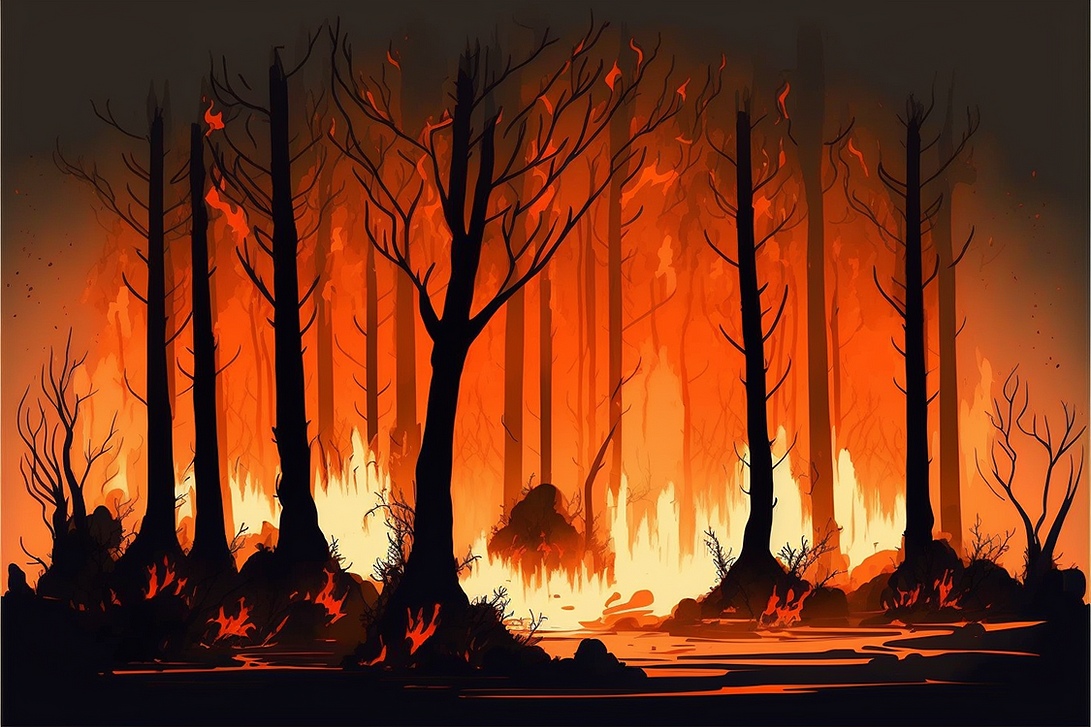
Consider for a moment the California wildfires that recently burned hundreds of thousands of acres, thousands of homes, and took hundreds of lives. One of the main reasons it was so bad: there were too few fires. If the rangers allowed for fires to sweep through the land every few years, as happens naturally via lightning, the fires would not have been as destructive as they were. They didn’t. Instead, detritus built up-and-up-and-up until fire struck. Because the flames were so intense, what would’ve been a mild, healthy burn in a normal year demolished the ecosystem. Ancient trees that had endured hundreds of lesser fires died. Animals that could normally burrow to safety perished. After the fire, instead of bouncing back to life, the shocked ecosystem struggled to hold on.
The lesson here: if you want to stay balanced in both work and at home, burnout. Modern day ideas of balance are inaccurate ideals which fail to recognize and integrate the necessity of destruction for growth. This applies to businesses, cultures, and, yes, our own mental health. This pattern was recognized thousands of years ago by Seneca, the ancient Roman statesmen and Stoic philosopher. It’s now gaining widespread attention across multiple disciplines as a powerful explanatory model of systems.
What follows is an explanation of what the Seneca Effect is, why it works, and how to use it to manage burnouts and have a healthier, more realistic vision of what internal balance and progress really look like.
What is the Seneca Effect?
Things grow slowly, but ruin rapidly. Trees. Humans. Nations. Businesses. Case-in-point, check out this chart on the age of death.
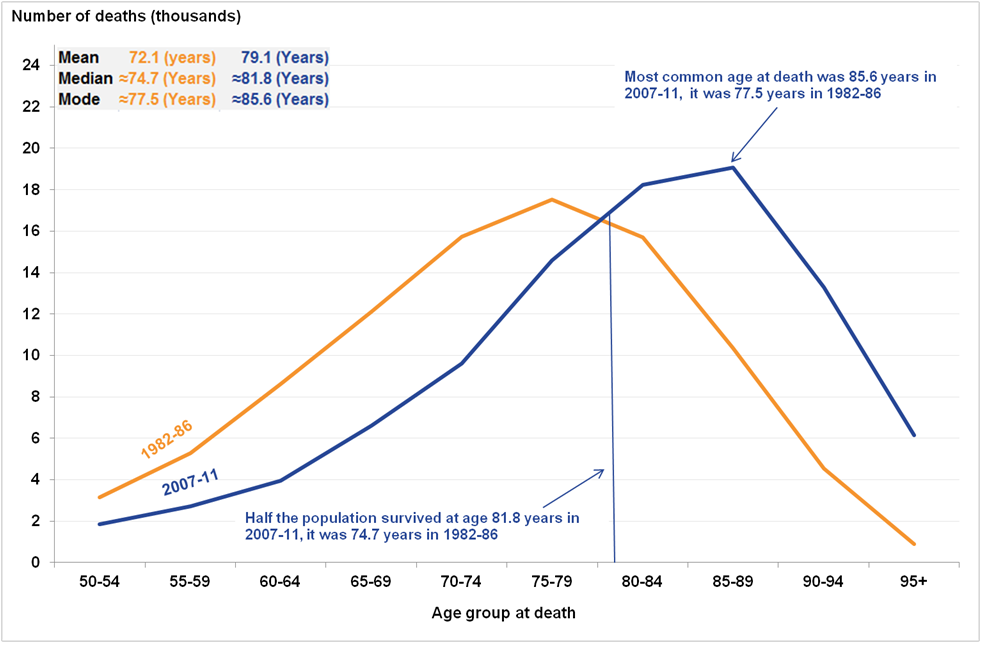 Number of deaths according to age. (Graph 1)
Number of deaths according to age. (Graph 1)
Now compare that trend to the Seneca Effect:
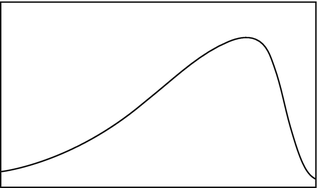
There’s a steady increase, a capping off, and then a sharp decline. All systems follow this trend. It’s been observed in stars, the formation of galaxies, the performance of sports teams, and even in the human heart.
I’ll get into the why later, but the Seneca Effect reflects a fundamental pattern of nature that’s necessary for any system to thrive and adapt. That might seem counter-intuitive. How can ruin be necessary for growth? Consider this: if all the trees in a forest magically stopped decaying, what would happen? The ecosystem would collapse. If all businesses ran indefinitely, what would happen? The economy would collapse as maladaptive businesses failed to provide necessary goods-and-services. Decay feeds growth. Falling apart is balance.
This is difficult for most to swallow. Instead, balance is often seen through rosy-glasses like this:
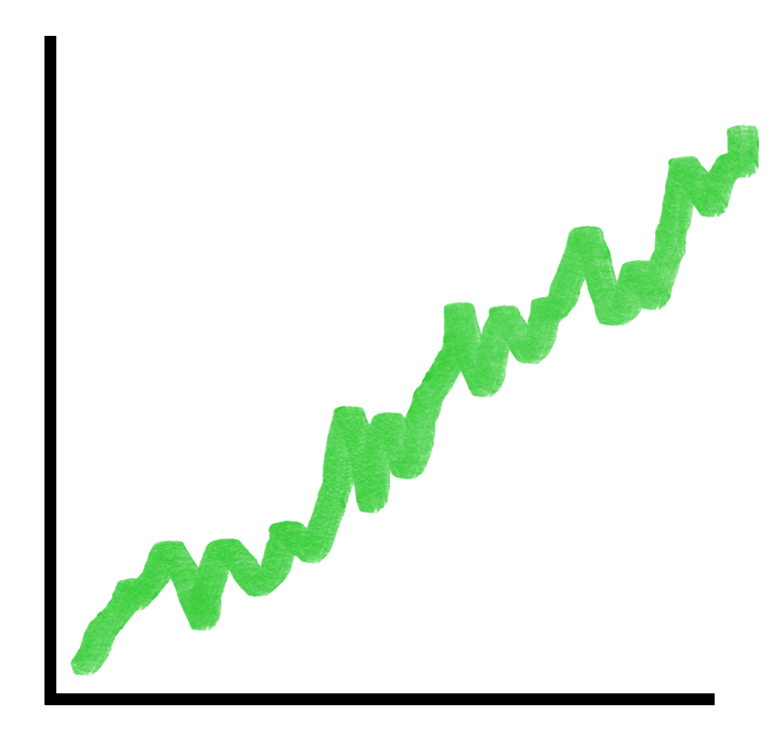 The ideal of balance. (Graph 2)
The ideal of balance. (Graph 2)
There are ups-and-downs, but a gradual, infinite progression. If you’re working out, for instance, you might be fast and inspired some days and lethargic on others, but, over time, you get faster and faster. If you’re running a business, some months it’s slow, others fast, but, over time it, should keep on growing. This was also the model used to predict economic growth in the mid-twentieth century. Unbridled growth. It’s wrong.
This is what balance really looks like if you’re playing the long game:
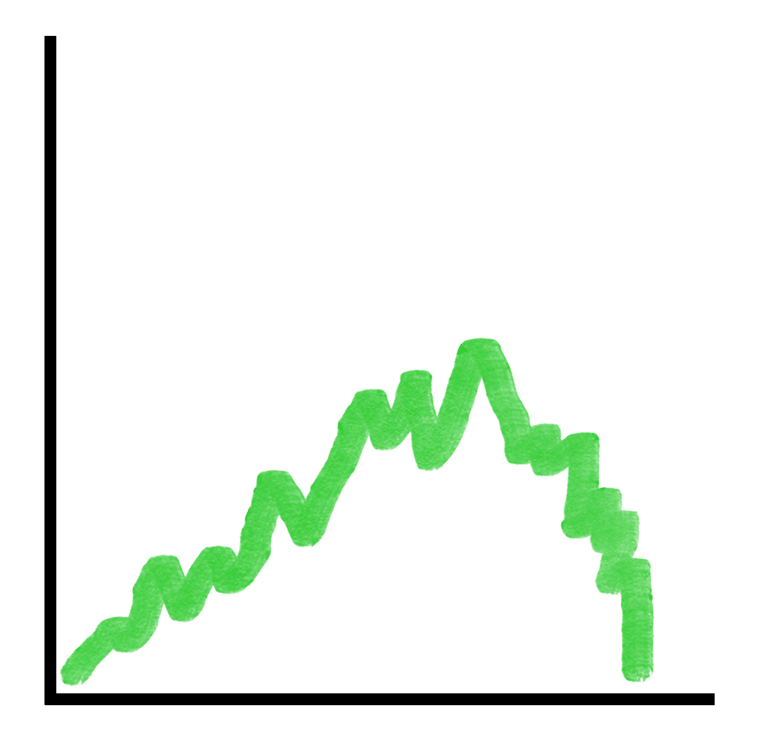 Real balance in the long-run or at high resolution. (Graph 3)
Real balance in the long-run or at high resolution. (Graph 3)
All endeavors end. No business can run forever. No bond is unbreakable. No organism invincible. However, it’s a mistake to see the crash as a dramatic end. In the long-long-game, it’s part of a bigger cycle of rises and falls.
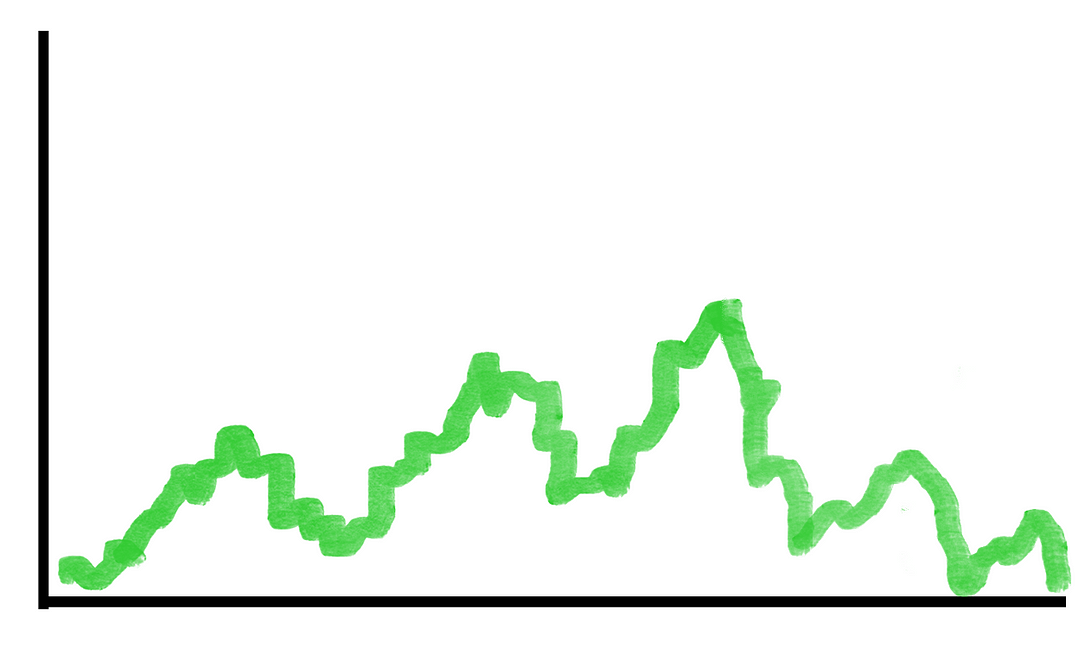 Real balance in the long-long-run or at very high resolution. (Graph 4)
Real balance in the long-long-run or at very high resolution. (Graph 4)
Think back to an ex, a long-time friend who you don’t talk to anymore, or a hobby you did for several years but stopped. The pattern probably looks something like this. A period of interest, dedication, and then burnout. Then inspiration takes hold again, effort kicks up, and then you can’t even bear to look at a guitar. Eventually, you reach a peak before it gradually declines and disappears from your life altogether.
There’s one more key detail worth bearing in mind: the more a system rejects collapse, the more extreme the fall. One tragic example of this is the wildfires in Australia. Because the state refused to do regular clearance burns and stopped natural forest fires, debris built up and created the perfect conditions for a super fire. When the fires kicked up, it was impossible to control. Had they followed nature’s own cycles, the damage would’ve been marginal. Instead, 60 million acres burnt, 3,000 buildings destroyed, 34 people killed, billions of animals dead, and a few possibly driven to extinction.
These charts mean two things. First, balance must include phases of destruction and renewal, not just starting, maintenance, and infinite progress. Second, everything ends in collapse.
Why does the Seneca Effect work?
The short answer: no one knows but it’s been observed across various systems, from the formation of stars to the cracks that form in mugs to the decline of empires.
My answer: the golden ratio. The golden ratio describes how organic and inorganic systems develop. The classic example is the nautilus shell, although if you look anywhere in the natural world, you’ll find this pattern. Trees. Roses. Mountains. Nature uses it because it’s efficient and effective.

Usually, scientists see the golden ratio as describing the growth of physical structures, however, when reversed, it also maps their decay. Take a look below at an abstracted version of the golden ratio and see if you can spot the Seneca Effect in action.
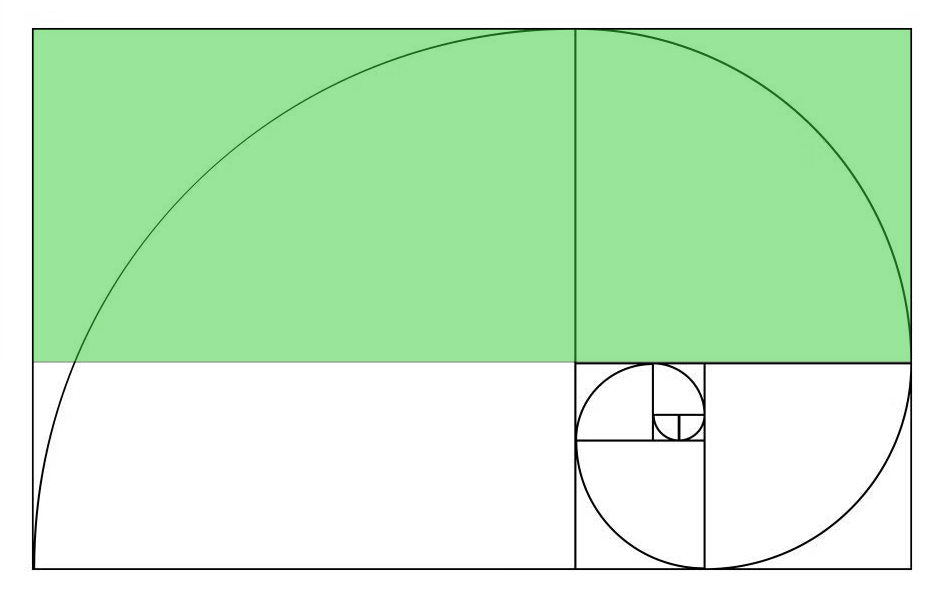
The top portion highlighted green is the Seneca Effect. Just as nature creates by order, so too it destroys. Like the golden ratio, the Seneca Effect is an intrinsic pattern of our ordered universe. Lest we forget, we humans too are both product and part of nature. Thus, these patterns apply not only how a tree grows or withers, but how a spirit thrives or collapses.
How to apply the Seneca Effect to mental health?
When it comes to mental health and the fine balancing act it entails, most imagine Graph 2, an elegant and inevitable climb upwards. Look back on your own past, though, and ask yourself if that’s accurate. See if burnouts weren’t a pattern of growth, rather dismissing them as failures or accidents. Does your own inner life look more like Graph 4 than Graph 2?
Most self-help books see burnout as something to be avoided like the plague. If it does happen, though, they insist it’s because of some failure. Not enough meditation. Bad diet. Toxic partner. Whatever. And it might actually be those things, but the Seneca Effect questions the assumption that these burnouts are irregularities and obstacles of growth. Instead, it points out two things:
- Burnouts and blowouts are a natural pattern of any activity, rather than abnormalities or errors that need fixing.
- Rejecting burnouts with more effort to hold things together leads to more severe collapses.
Instead of avoiding burnouts, welcome them as natural phases of our own inner world. When the collapse inevitably comes, don’t struggle to maintain. Wait it out and allow new growth to peak through the ashes.
This doesn’t mean making no efforts to keep a cheerful mood, live a balanced life, or stay inspired throughout the days, weeks, months, or years. Extreme imbalance will bring collapse on quicker and more dramatically and needs to be avoided. But temper that effort with respect for the fact that shits gonna hit the fan every once in a while and it’ll seem like months or years of effort are gone in an a flash. That too is growth.
Techniques to Manage Burnout
Given that burnouts are a feature of growth, here are some strategies to help manage them:
- Switch focus. If a project’s not electrifying you like it used to or makes you gag every time you think of it, the best solution is often to do something else. Look for things that spark or go through to-do-lists and see what else needs doing. Wait a while until the inspiration returns naturally. You’ll come back rejuvenated and wiser. The idea of waiting around doing nothing might seem horrifying when there are big deadlines in the distance, but we must respect our rhythms of nature. There are some circumstances where it’s not possible, but if you can wait, wait.
- Accept it. Might sound cringe, but it works. When burnout sets in, there’s often a scramble to damage control and, when that fails, anxiety and desperation for it to be over as quickly and painlessly as possible. Both of these reactions prolong it. Instead of running away, confront it, know it, and feel it. That could mean long walks, meditation, or even while scanning documents in the office. Wherever you are, let yourself feel the exhaustion. Notice the thoughts running through your head and listen. When you’re exhausted, it’s a time to rest and accept, not push-push-push.
- Pacing. As I wrote here, a key to managing burnouts is pacing at work. If you’re working extra-long hours on the regular and don’t have time to exercise, connect with friends, and stay grounded, you will collapse. The more you push through, the harder the fall. Some quit, take weeks of sick leave, or ruin marriages in the fallout. It’s not worth it. Find a sustainable work-life schedule and stick to it as best you can. Also know that, despite your best efforts, burnout will eventually come. Managed well, though, it will do far less damage.











Read 0 comments and reply